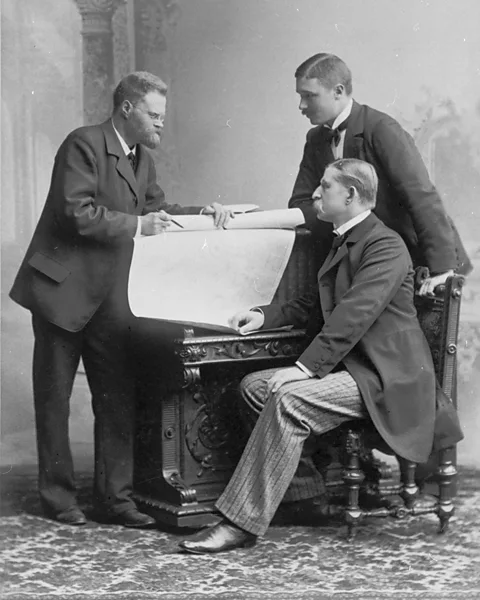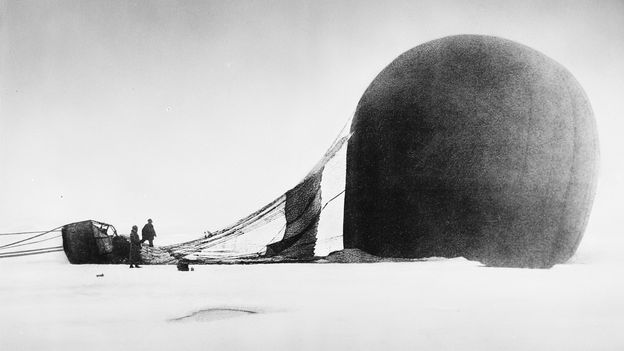 Gösta Florman, courtesy of Grenna MuseumThe 1896 Andrée expedition was one of the most spectacularly unfortunate attempts (Credit: Gösta Florman, courtesy of Grenna Museum)Lost for 33 years
Gösta Florman, courtesy of Grenna MuseumThe 1896 Andrée expedition was one of the most spectacularly unfortunate attempts (Credit: Gösta Florman, courtesy of Grenna Museum)Lost for 33 years
Of all the doomed, early expeditions, the ill-fated Andrée mission is “perhaps the most unfortunate,” says Markusson.
After executing daring balloon flights across the Baltic Sea, Swedish engineer Salomon August Andrée decided he would succeed where dogs and sledges had failed by flying over the ice.
After an aborted first try in 1896 due to the wind blowing in the wrong direction, he returned the following year with photographer Nils Strindberg and engineer Knut Frænkel. They set off in a hydrogen balloon, tuxedos and Champagne packed for celebration, planning to fly over the North Pole and drop a Swedish flag in a matter of just a few hours. After liftoff, nothing was heard of them for 33 years.
Decades later, a Norwegian expedition stumbled upon the wreckage and the three men’s remains. Their recovered diaries fill in the gaps: during their ascent, the long tow lines they used for steering tangled and they lost control of the balloon. As they drifted farther north, rain and fog caused the balloon to ice over, and after just 65 hours in the air, they were forced to make a crash landing. The men then embarked on a 400km, three-month trek on foot, eventually reaching the small island of Kvitøya, where they perished trying to overwinter.


